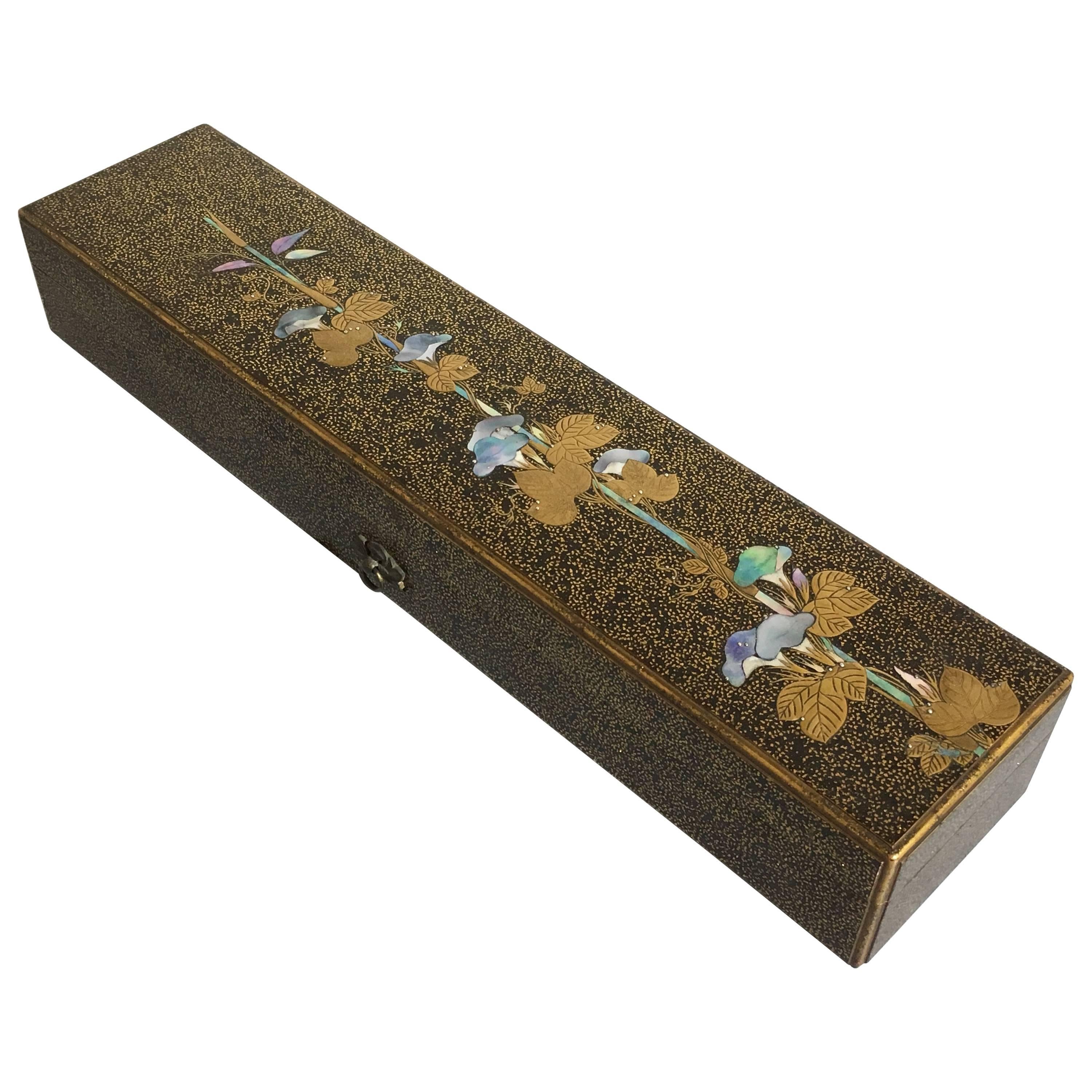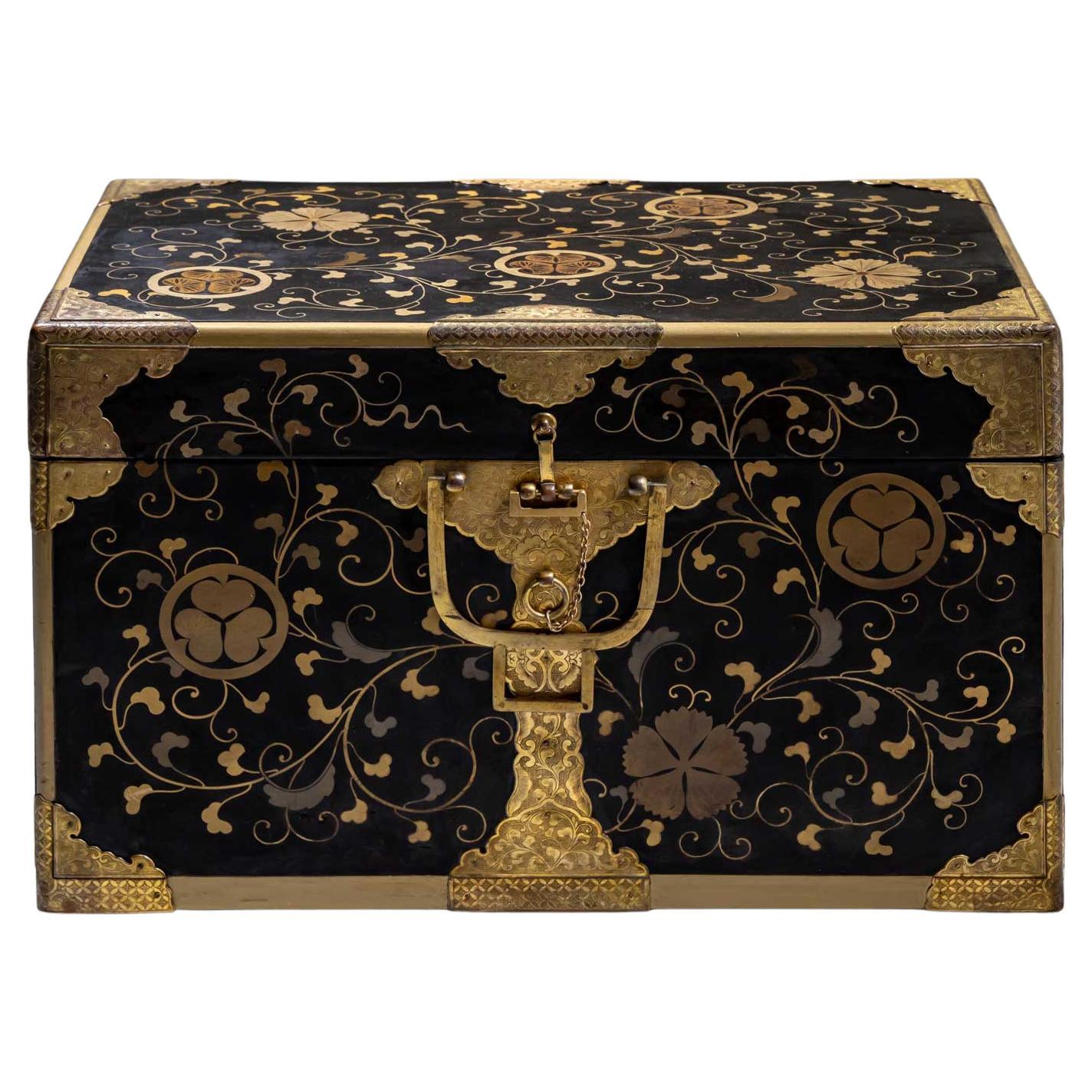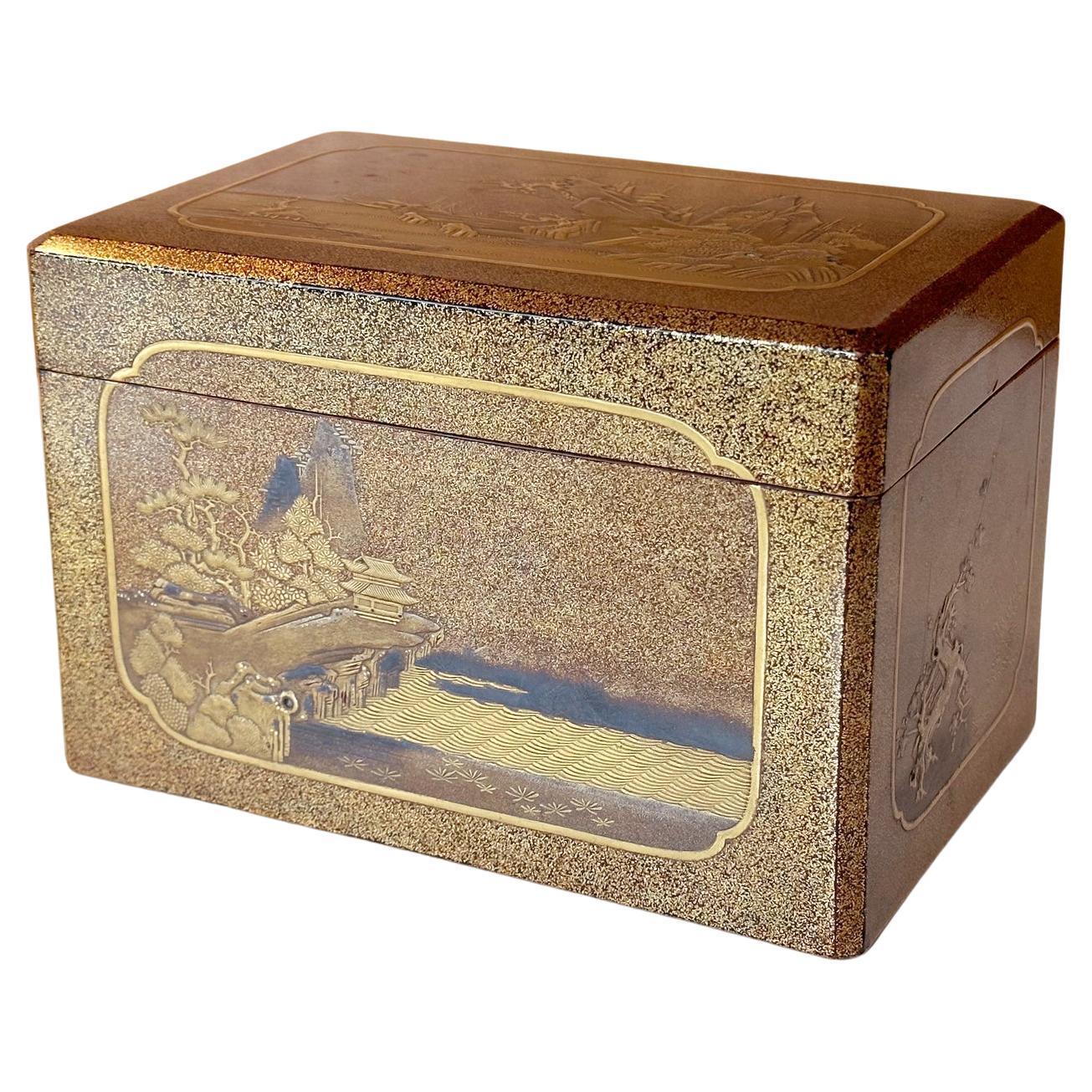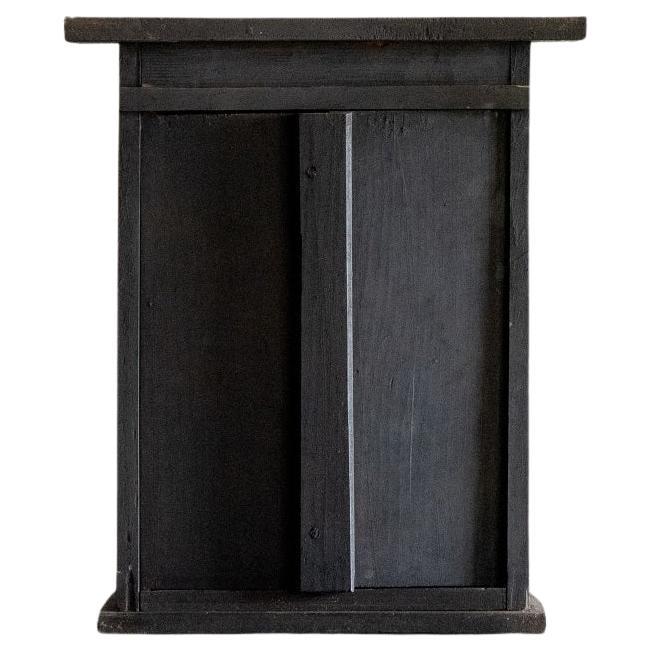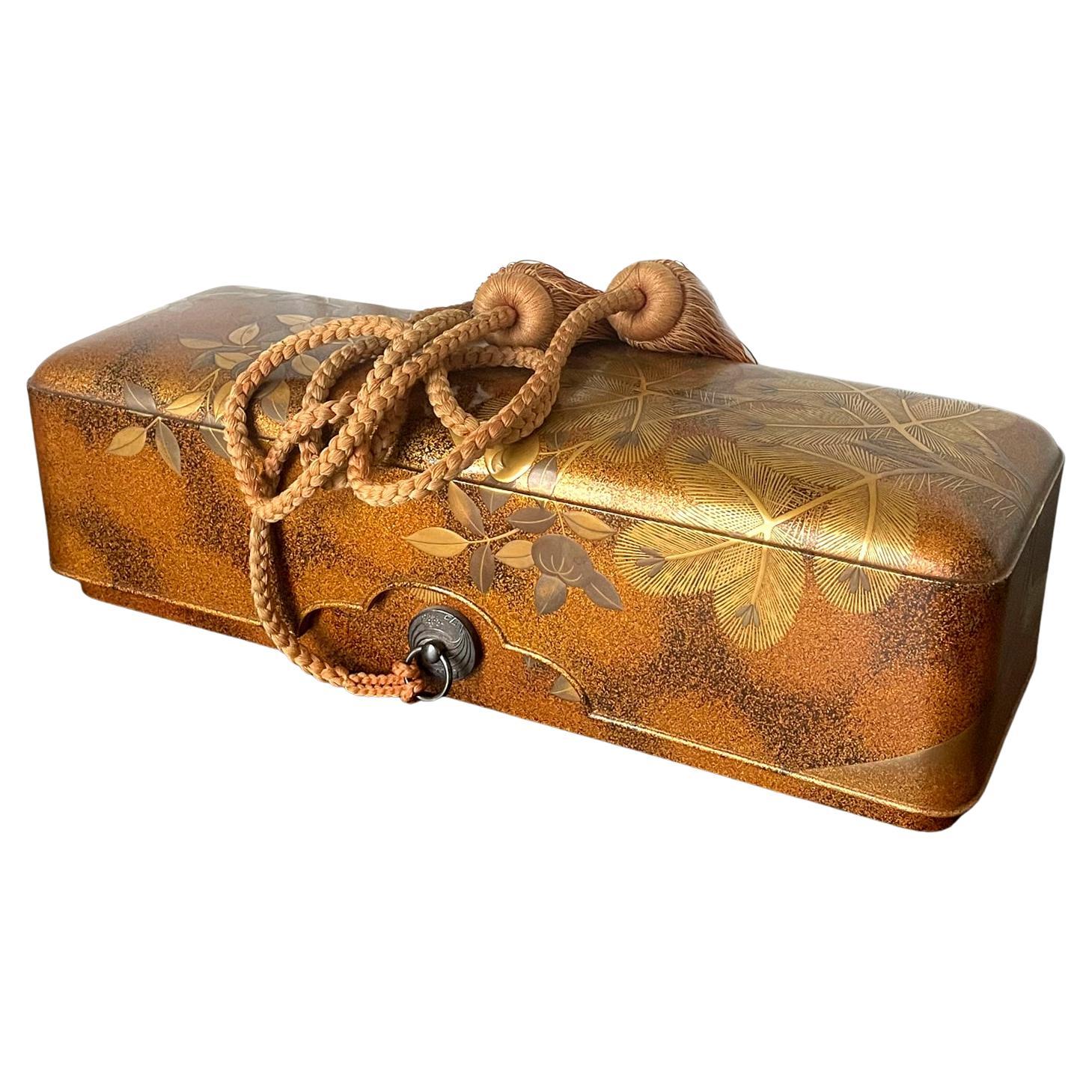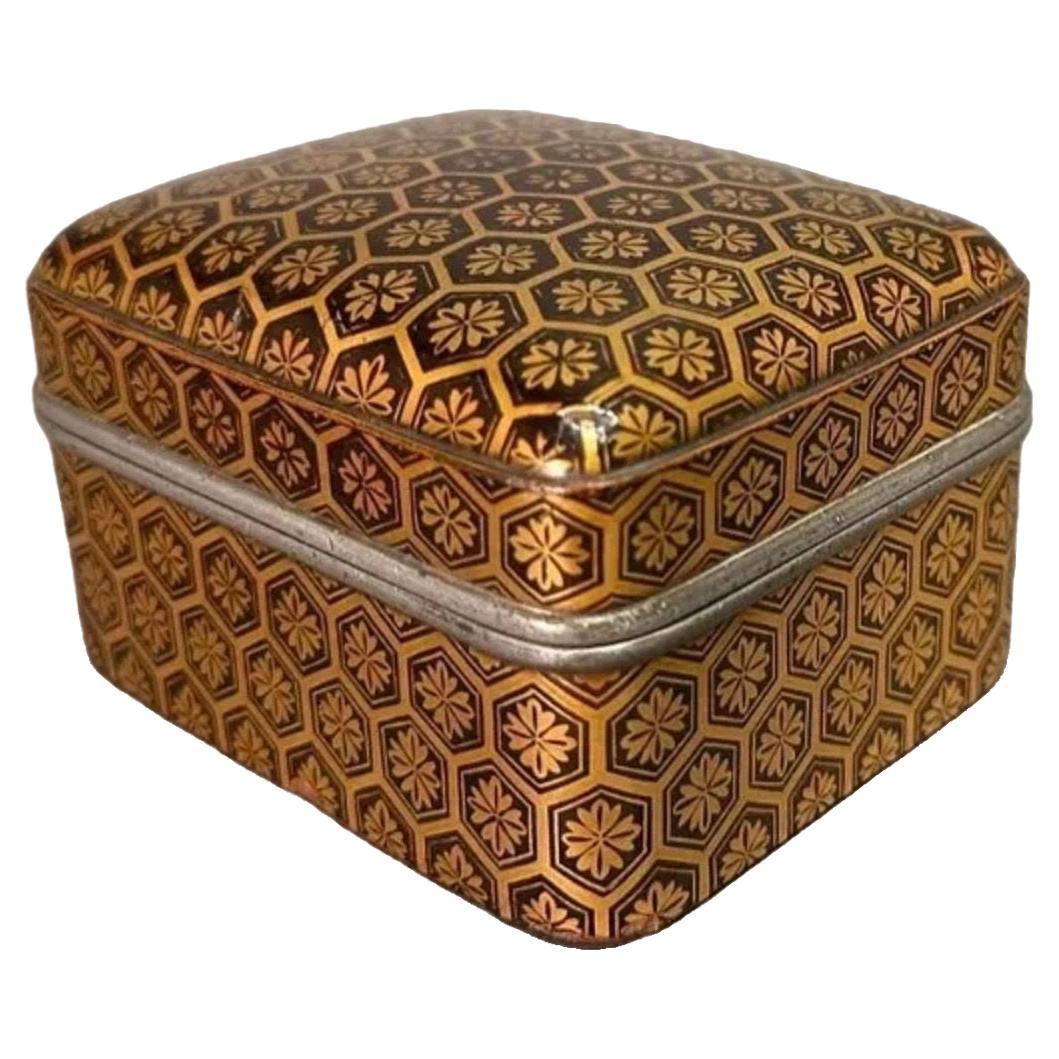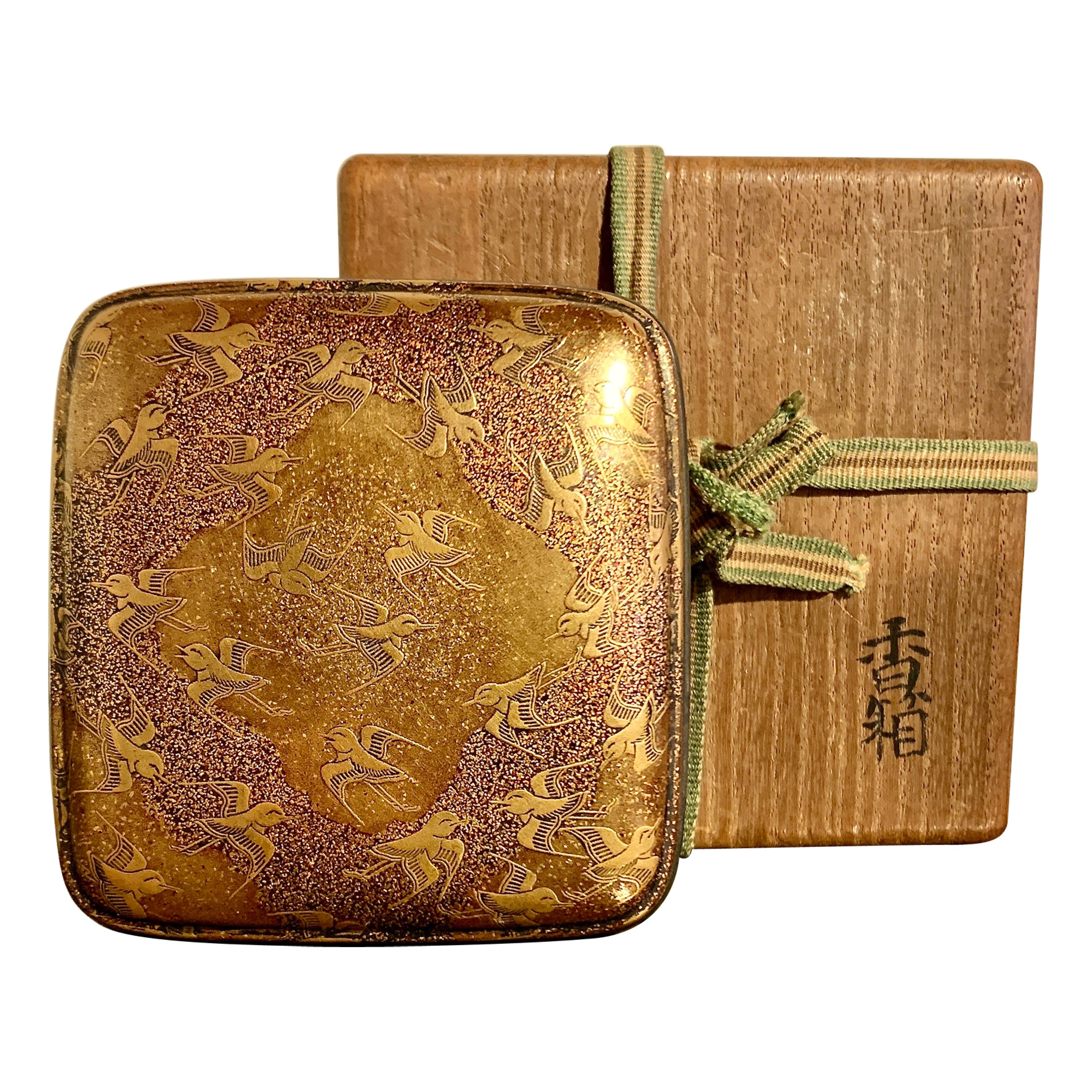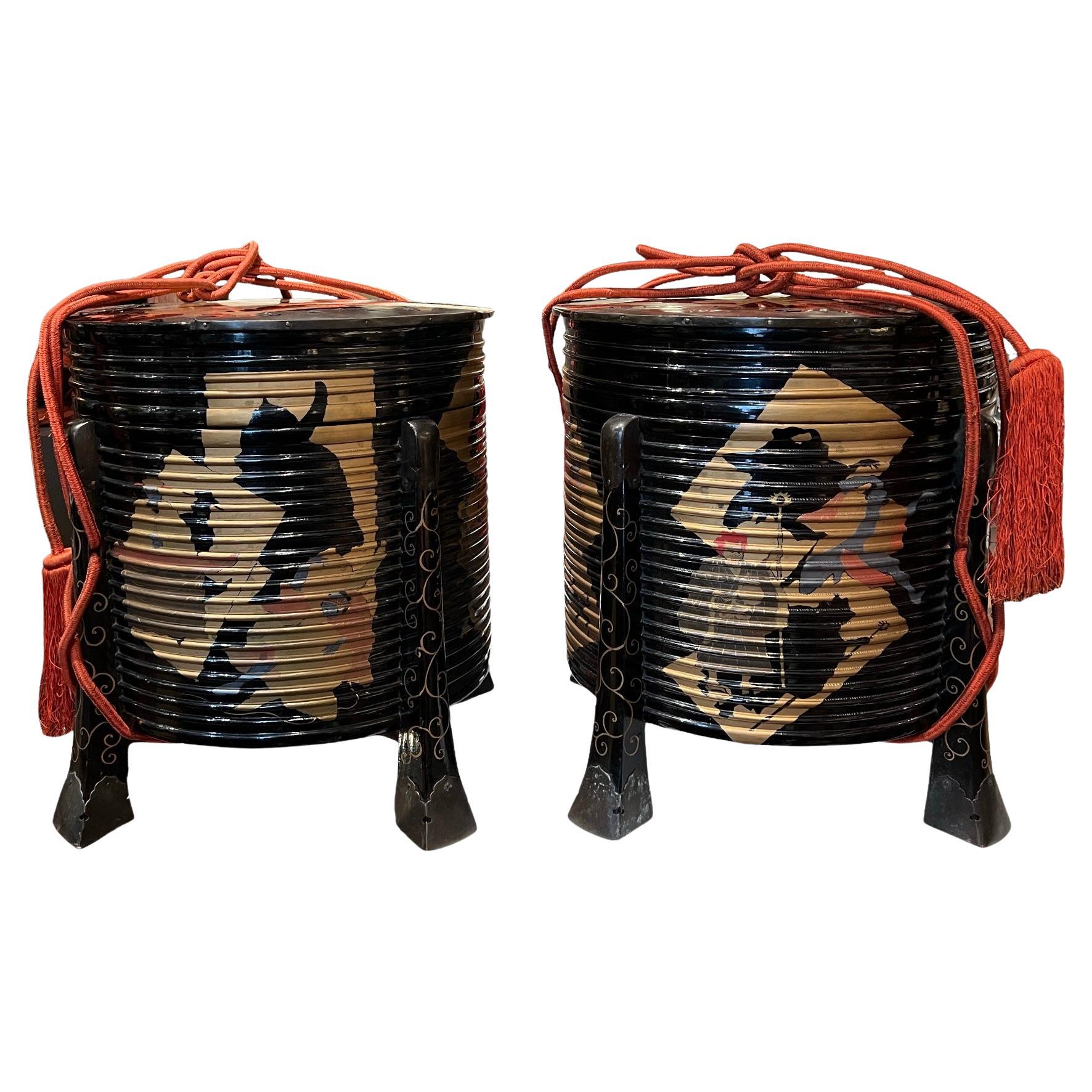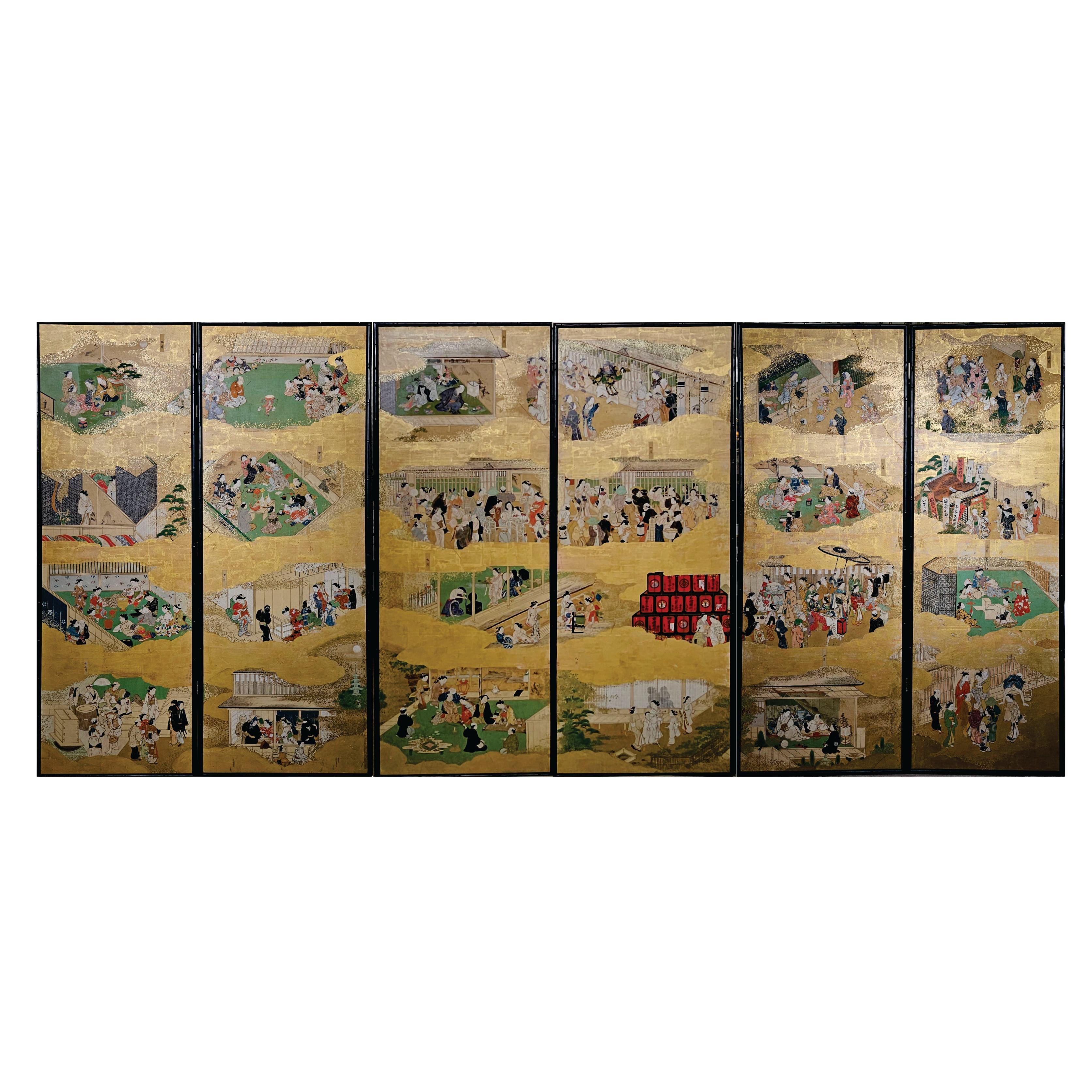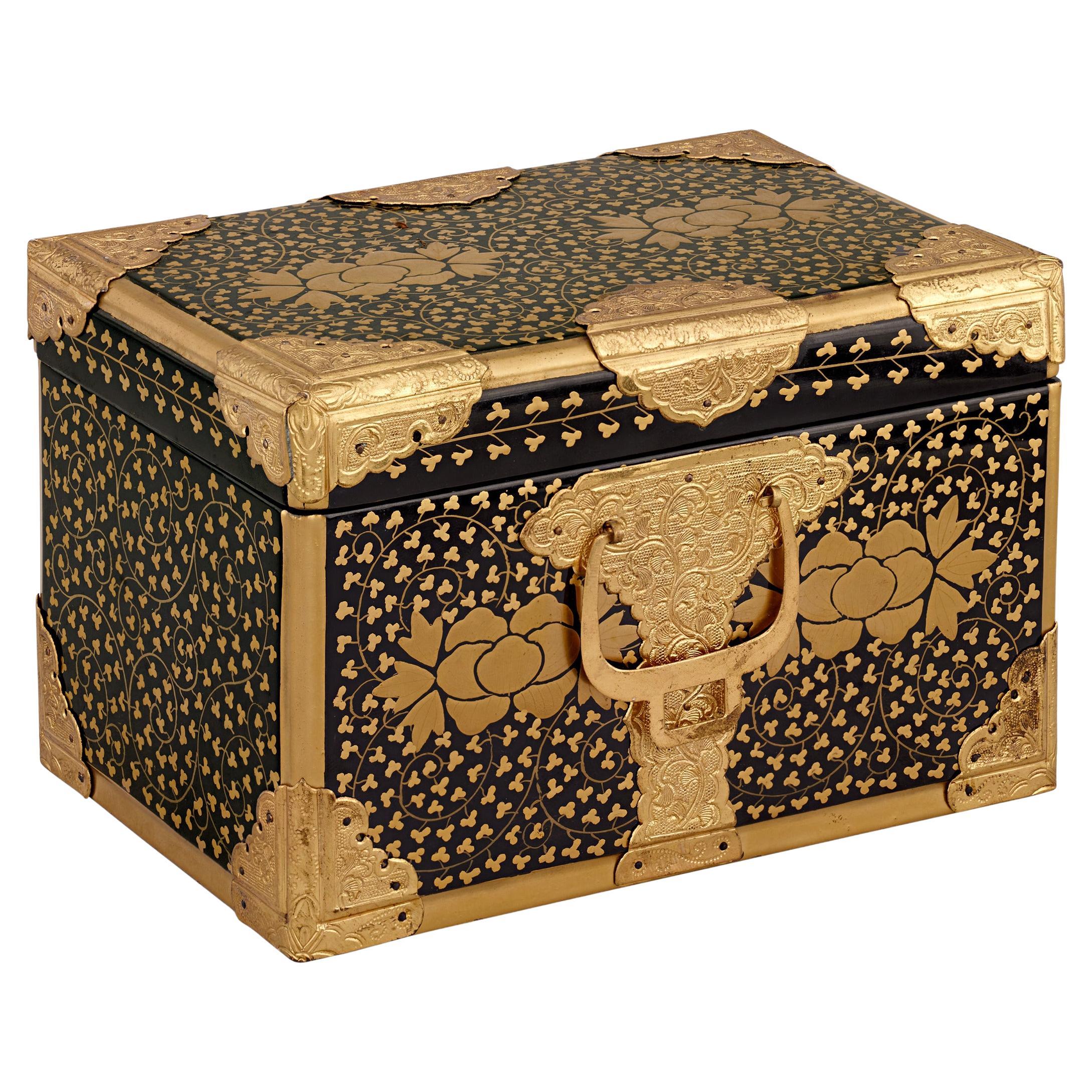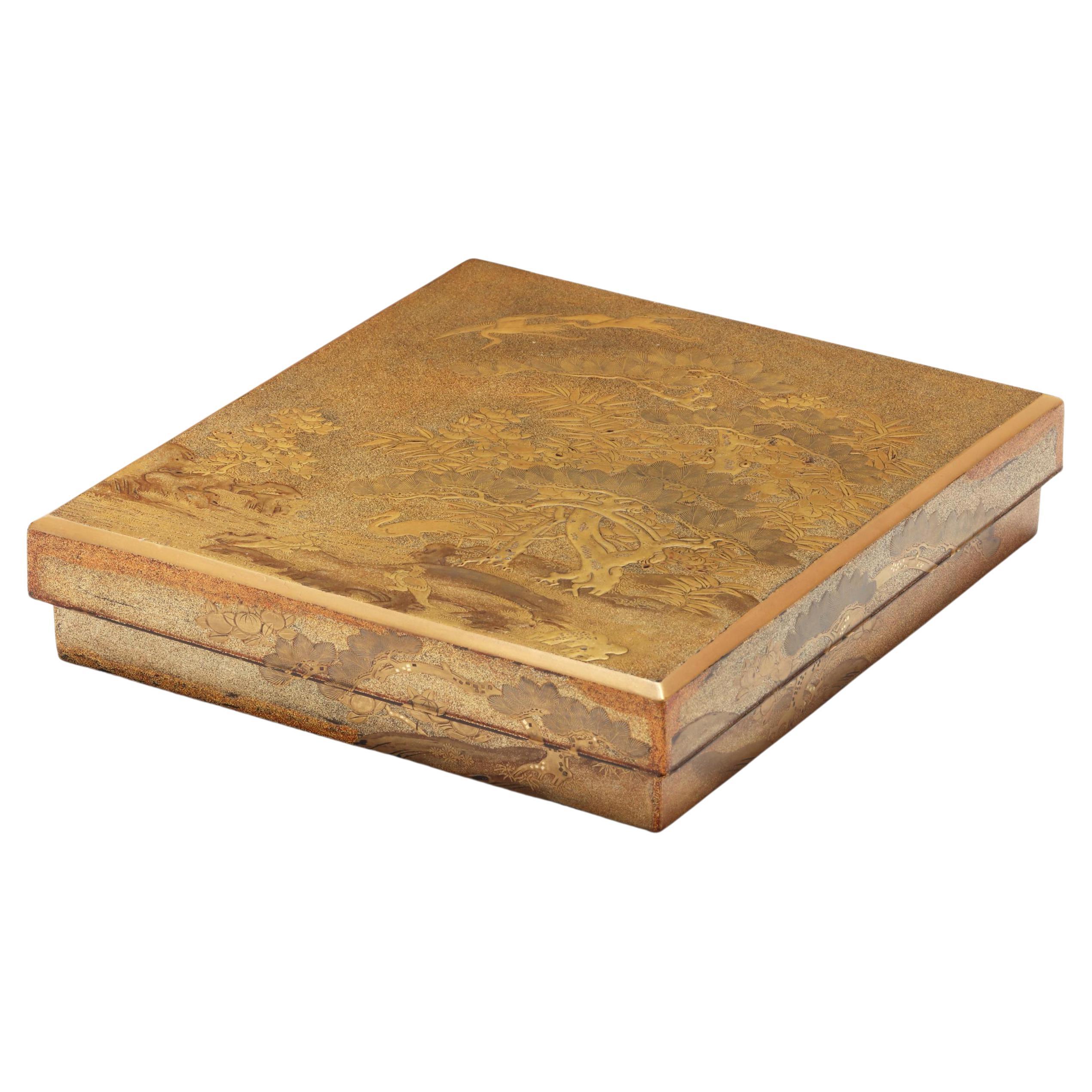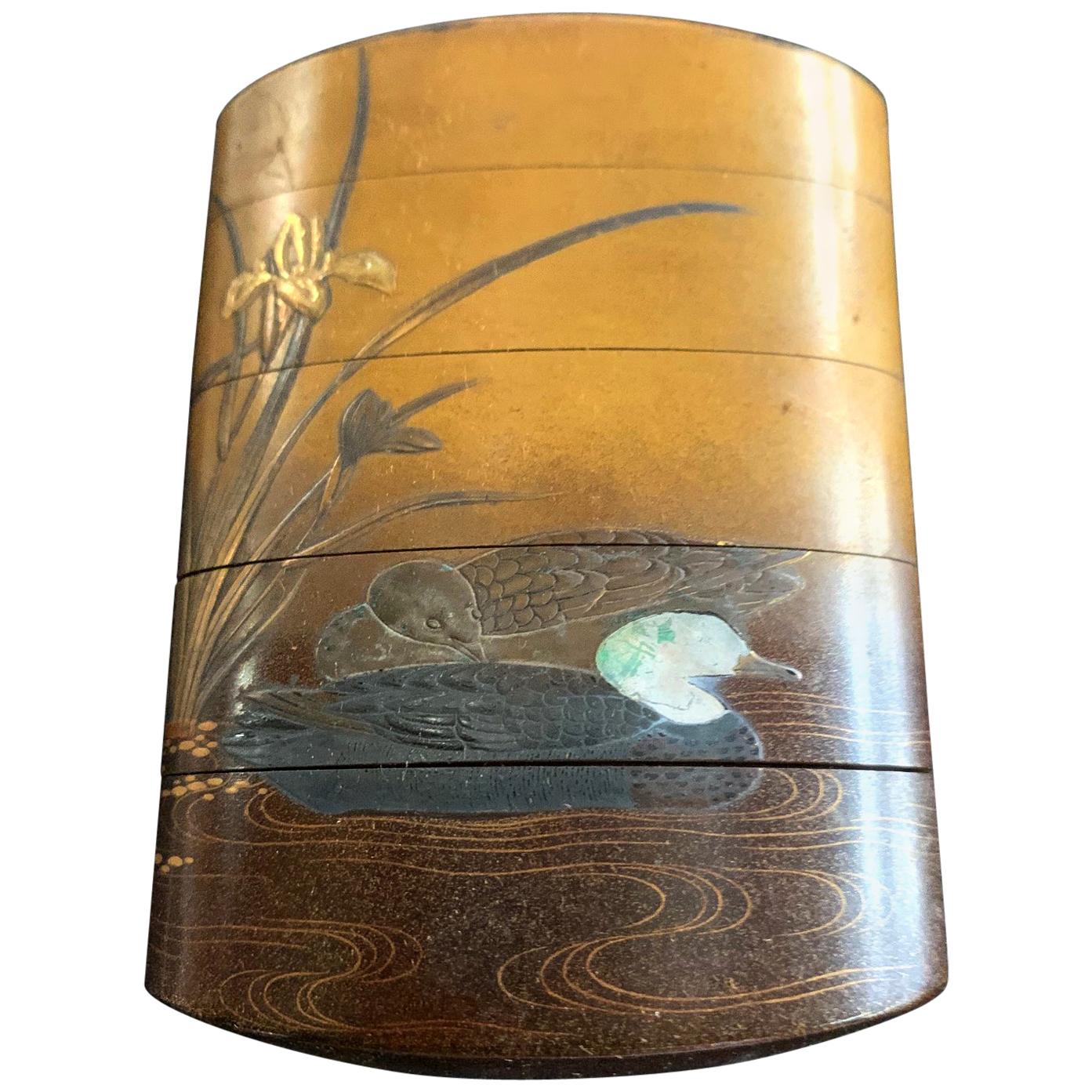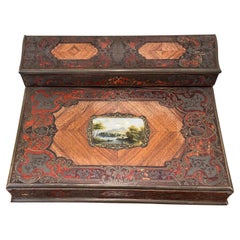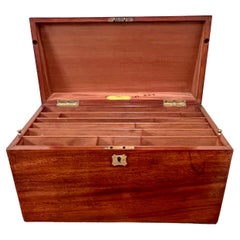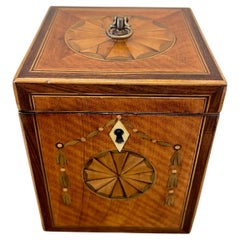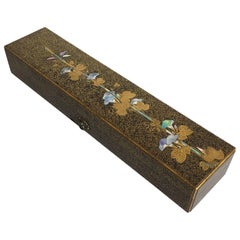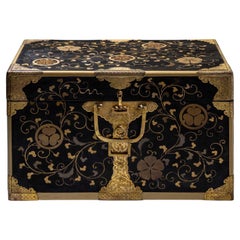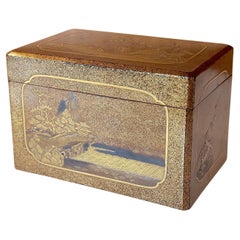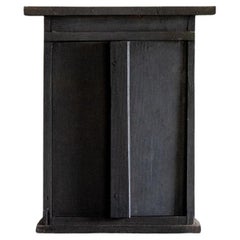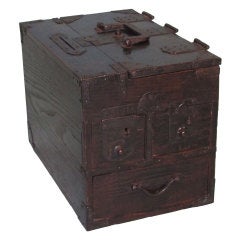
Japanese Zeni-Bako Box, Edo Period
View Similar Items
Want more images or videos?
Request additional images or videos from the seller
1 of 5
Japanese Zeni-Bako Box, Edo Period
$975List Price
About the Item
- Dimensions:Height: 9 in (22.86 cm)Width: 8 in (20.32 cm)Depth: 12 in (30.48 cm)
- Style:Edo (Of the Period)
- Place of Origin:
- Period:
- Date of Manufacture:circa 1800-1830
- Condition:Wear consistent with age and use.
- Seller Location:San Francisco, CA
- Reference Number:Seller: F113-39A1stDibs: LU8552756772
About the Seller
5.0
Recognized Seller
These prestigious sellers are industry leaders and represent the highest echelon for item quality and design.
Platinum Seller
Premium sellers with a 4.7+ rating and 24-hour response times
Established in 1982
1stDibs seller since 2008
361 sales on 1stDibs
Associations
The Art and Antique Dealers League of AmericaAntiques Associations Members
Authenticity Guarantee
In the unlikely event there’s an issue with an item’s authenticity, contact us within 1 year for a full refund. DetailsMoney-Back Guarantee
If your item is not as described, is damaged in transit, or does not arrive, contact us within 7 days for a full refund. Details24-Hour Cancellation
You have a 24-hour grace period in which to reconsider your purchase, with no questions asked.Vetted Professional Sellers
Our world-class sellers must adhere to strict standards for service and quality, maintaining the integrity of our listings.Price-Match Guarantee
If you find that a seller listed the same item for a lower price elsewhere, we’ll match it.Trusted Global Delivery
Our best-in-class carrier network provides specialized shipping options worldwide, including custom delivery.More From This Seller
View AllFrench Napoleon III Period Brass Inlaid Rosewood and Walnut Lap Desk
Located in San Francisco, CA
A very pretty French Napoleon III period brass inlaid rosewood and kingwood lap desk of fine quality. This portable writing desk is centered by a beautifully painted landscape scene....
Category
Antique Late 19th Century French Napoleon III Decorative Boxes
Materials
Brass
Very Fine Quality English Mahogany Letter Box Made and Labeled by F. Waller
Located in San Francisco, CA
A very fine quality English mahogany letter box made and signed by F. Waller and so labeled. This finely crafted letter box has 2 drawers one on each side fitted with campaign style ...
Category
Antique 1830s English Regency Decorative Boxes
Materials
Brass
English Campaign Style Rosewood Brass Inlaid Lap Desk, circa 1850
Located in San Francisco, CA
A fine quality brass inlaid Campaign style traveling desk with a recessed brass handle engraved with the name of its owner, Anne Orten. The piece opens to reveal a velvet lined writi...
Category
Antique Mid-19th Century English Campaign Decorative Boxes
Materials
Brass
English Inlaid Mahogany Tea Caddy with Elaborate Crossbanding and Swag Inlay
Located in San Francisco, CA
An extremely fine quality inlaid mahogany tea caddy of elegant small size, the top and front with elaborate crossbanding and circular fan inay, the front with further swag inlay, the...
Category
Antique Late 18th Century English George III Tea Caddies
Materials
Boxwood, Mahogany, Rosewood
Meiji Period Japanese Kutani Censer Decorated with Figures In Exotic Landscape
Located in San Francisco, CA
An unusual Japanese Meiji period lidded incense burner or censer with reticulated ovoid body and cap, decorated with a cream background and traditionally garbed people in tones of oc...
Category
Early 20th Century Japanese Meiji Ceramics
Materials
Porcelain
English William & Mary Period Walnut Oyster Veneered Glove Box on Later Stand
Located in San Francisco, CA
An English William and Mary period inlaid walnut oyster veneered glove box of typical form, the top opening to reveal a later fabric lined surface. Oyster veneer gets its name from t...
Category
Antique Late 17th Century English William and Mary Side Tables
Materials
Walnut, Burl
You May Also Like
Japanese Edo Period Igarashi School Long Lacquer Box, Tanzaku-Bako
Located in Austin, TX
A stunning Japanese Edo period lacquer tanzakubako, box for poem cards, late 18th-early 19th century, Edo Period, Japan.
Attributed to the Igarashi School, this box is masterfully ...
Category
Antique Early 19th Century Japanese Edo Lacquer
Materials
Mother-of-Pearl, Lacquer
Japanese Lacquer Chest, Edo Period
Located in Greding, DE
Small rectangular Japanese chest with gold lacquer decoration in the form of leaf tendrils. The chest is decorated with cut-out and ornamentally engraved fittings on the corners and ...
Category
Antique 18th Century Japanese Edo Decorative Boxes
Materials
Brass
Exquisite Japanese Lacquer Maki-e Hand Box Kobako Edo Period
Located in Atlanta, GA
An early Japanese lacquer Maki-e decorated kobako (small storage box) circa 18th century (Edo period). Based on its form and size, this kobako was possibly used as a Chabako to store the accoutrements for chado (tea ceremony). The lidded box is of rectangular form with bevel design on all edge that softens the appearance. The entire surface was densely covered with a background of nashiji. Elaborate Maki-e techniques were used on each side to showcase a distinct landscape or floral design within a cartouche panel. On the surface of the lid, a mountainous landscape rises from the edge of the water. The poetic composition is akin to a traditional ink scroll...
Category
Antique 18th Century Japanese Edo Lacquer
Materials
Lacquer
Japanese Antique Buddhist Shrine Box "Zushi", Edo Period '1603-1868'
Located in Hitachiomiya-shi, 08
This antique Buddhist shrine box was crafted in the Edo Period (1603-1868).
Known in Japan as a “Zushi,” it served as a small sanctuary to enshrine Buddhist figures, scriptures, or ...
Category
Antique Mid-17th Century Japanese Edo Decorative Boxes
Materials
Cedar
Japanese Lacquer Maki-E Scroll Box Fubako by Kansonsai Edo Period
Located in Atlanta, GA
A Japanese lacquered wood fubako (a box to store document or small scroll painting) circa late 18th century of Edo period. The rectangular box features a deep lid with rounded corners and recessed mid-edge and a lower box with two bronze medallion rings and tasseled silk ties. The surface of the fubako was elaborately decorated with hiramaki-e and a low takamaki-e on a mottled Mura-nashiji background. The motifs on the lid depict branches of Japanese pine with finely rendered needles on the lower part; on the upper part, it showcases fruited persimmon branches. Two different shades of gold fundame were used to contrast the design and augmented by scattered gold kirigane to highlight some of the leaves. The design continues and cascades down to all sides of the lid as well as the walls of the box. The two bronze medallions appear original to the box and the silk ties show significant fading from the age. This Fine fubako is signed on the lower wall "Kanshosai" in Kanji with a kao mark. All the trims were finished in gold fundame and the interiors a dense nashiji in gold.
Kanshosai is the mark of the distinguished lacquer artist Lizuka Toyo I who also signed his work "Toyosai". He was active in the second half of the 18th century during Edo period, employed by Hachisuka Shigeyoshi (1738-1801), daimyo of Awa on Shikoku Island. Although most survived work bearing his marks are inros, he was also known to decorated trays and other larger objects...
Category
Antique Late 18th Century Japanese Edo Lacquer
Materials
Wood, Lacquer
A Japanese Edo Period Lacquer Kogo (Incense) Box, late 17/early 18th Century
Located in Spencertown, NY
Early Japanese Lacquer Incense Box (Kogo) Late 17thc. Of rectangular form with soft corners, decorated with a diaper pattern in gold lacquer on a brownish black ground, with pewter r...
Category
Antique 17th Century Japanese Edo Decorative Boxes
Materials
Pewter
Recently Viewed
View AllMore Ways To Browse
Japanese Iron Box
Japanese Bako
Silver Dragon Box
Silver Keepsake Box
Vintage Limoges Boxes Trinket Boxes
Antique Islamic Jewelry
Mexican Brass Box
Mughal Box
Swedish Wedding Box
Swiss Musical Movement
Tramp Art Box
Trinket Shelf
Victorian Letter Box
Vintage Lebanese
19th Century French Cut Crystal Box
Antique Indian Brass Tray
Copper Trinket Box
Italian Marquetry Boxes
